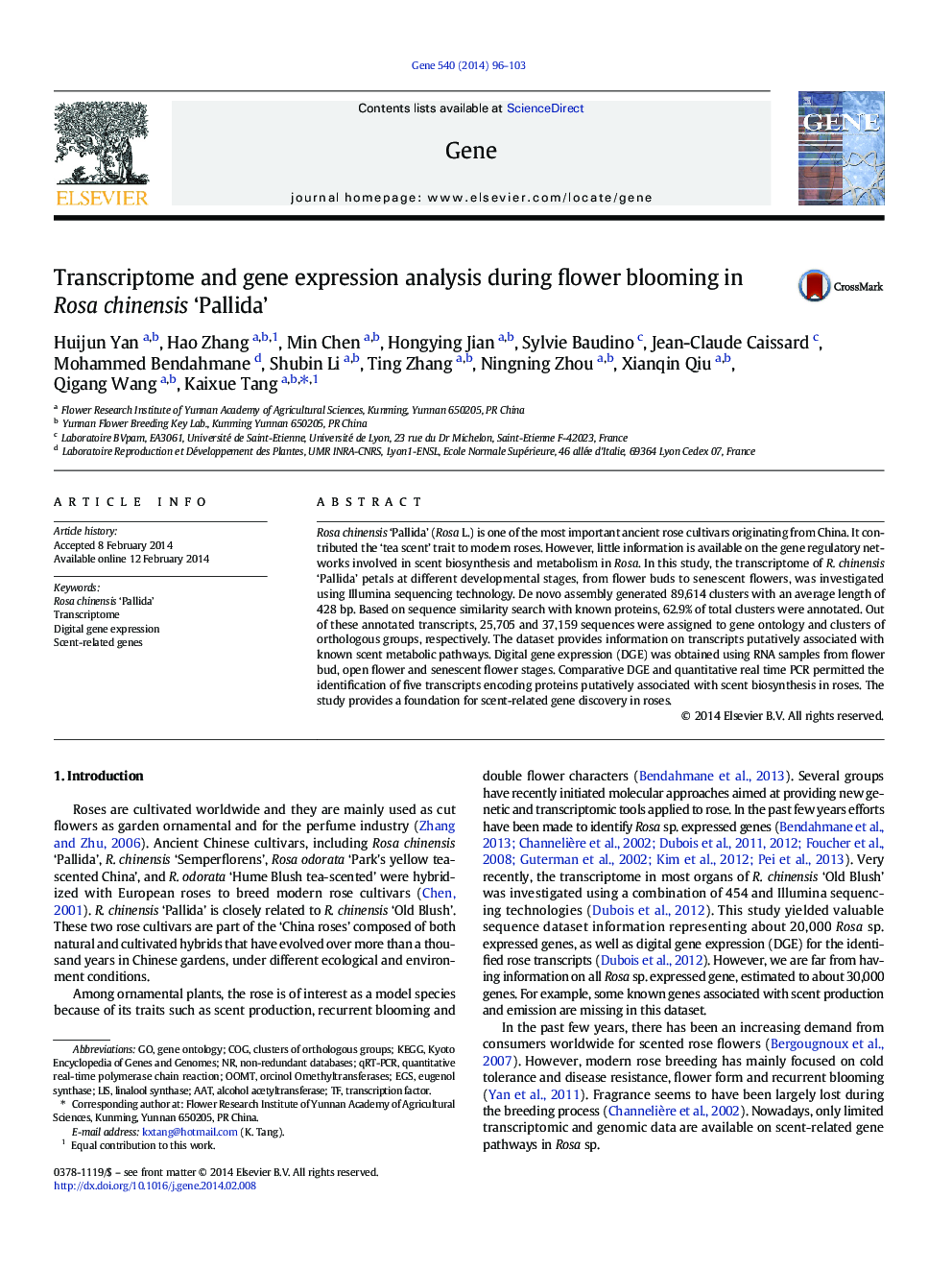| Article ID | Journal | Published Year | Pages | File Type |
|---|---|---|---|---|
| 2816545 | Gene | 2014 | 8 Pages |
•The transcriptome of R. chinensis ‘Pallida’ from petals was sequenced.•The dataset provides information on genes putatively associated with rose scent.•The specific genes at different flower developmental stages were identified.•Five genes related to scent synthesis were validated.
Rosa chinensis ‘Pallida’ (Rosa L.) is one of the most important ancient rose cultivars originating from China. It contributed the ‘tea scent’ trait to modern roses. However, little information is available on the gene regulatory networks involved in scent biosynthesis and metabolism in Rosa. In this study, the transcriptome of R. chinensis ‘Pallida’ petals at different developmental stages, from flower buds to senescent flowers, was investigated using Illumina sequencing technology. De novo assembly generated 89,614 clusters with an average length of 428 bp. Based on sequence similarity search with known proteins, 62.9% of total clusters were annotated. Out of these annotated transcripts, 25,705 and 37,159 sequences were assigned to gene ontology and clusters of orthologous groups, respectively. The dataset provides information on transcripts putatively associated with known scent metabolic pathways. Digital gene expression (DGE) was obtained using RNA samples from flower bud, open flower and senescent flower stages. Comparative DGE and quantitative real time PCR permitted the identification of five transcripts encoding proteins putatively associated with scent biosynthesis in roses. The study provides a foundation for scent-related gene discovery in roses.
